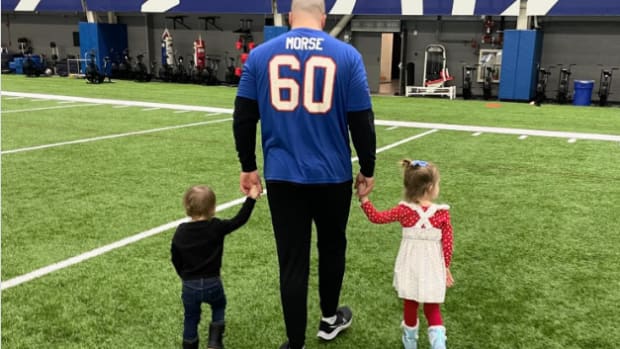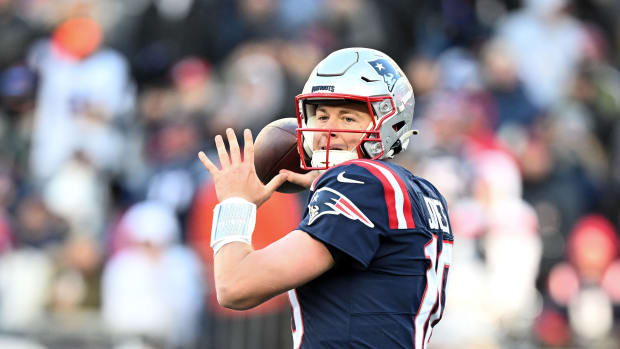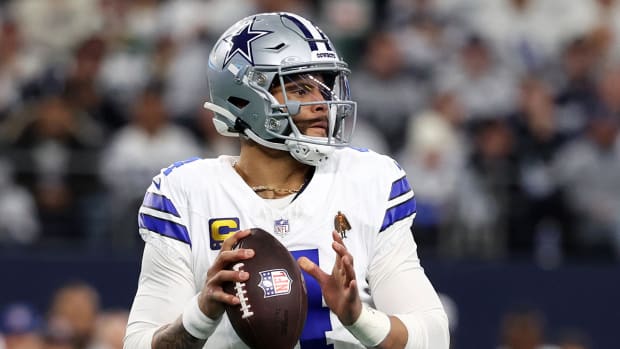What Jay Gruden’s Utilization of TEs in the Past Could Mean for the Jaguars
For the past several seasons, the Jacksonville Jaguars have been working uphill to attempt to get production from the tight end position. Injuries have taken their toll, and the release of Marcedes Lewis after 2017 has left a lasting impact.
In 2018, free agent signee Austin Seferian-Jenkins, who was supposed to step into Lewis' role as the starting tight end, played in only five games due to injury, leading to him recording only 11 catches for 90 yards and one touchdown in his lone season in Jacksonville. The rest of the tight ends struggled behind Seferian-Jenkins, with none catching a touchdown in 2018.
2019 didn't get much better, and it has left 2020 a question mark. 2019 third-round draft pick Josh Oliver played in only four games due to injuries, free agent Geoff Swaim missed over half the season and caught only 13 passes for 65 yards, and Seth DeValve, Ben Koyack, Charles Jones, and Nick O'Leary all failed to record 13 catches or 150 yards.
Only one Jaguars' tight end on the roster — James O'Shaughnessy — has recorded 100 receiving yards in consecutive seasons, and the veteran was the lone bright spot in 2019. He suffered a season-ending ACL injury in Week 5, but recorded 14 catches for 153 yards and two touchdowns in only 209 snaps.
With the issues at the tight end position in recent Jaguars' offenses, led by former offensive coordinators Nathaniel Hackett and John DeFilippo, Jacksonville has lacked an important element to their offense. While other teams utilize tight ends to become major factors in the passing and running games, the Jaguars have been unable to generate anywhere near the same production.
Now, it will be up to new offensive coordinator Jay Gruden to reverse the trend. Can he figure out ways to scheme production out of the position, utilize the depth, or find a role for Oliver? It is worth looking at his past offenses to gauge how much of a possibility this is.
Gruden has been leading offenses in the NFL since 2011, coordinating the Cincinnati Bengals from 2011-2013, and then designing the offense and calling plays on and off as the Washington Redskin's head coach from 2014 through Week 5 in 2019.
With the Bengals, Gruden had the advantage of a first-round tight end at his disposal in every season. Jermaine Gresham, who the Bengals selected 21st overall in the 2010 NFL Draft, had consistently solid, albeit unspectacular, production under Gruden. Tyler Eifert, who the Bengals selected 21st in 2013, teamed up with Gresham to give the Bengals a one-two punch at tight end in Gruden's final season with the Bengals.
- 2011: Gresham caught 56 passes for 596 yards and six touchdowns.
- 2012: Gresham caught 64 passes for 737 yards and five touchdowns.
- 2013: Gresham caught 46 passes 458 for yards and four touchdowns. Eifert caught 39 passes for 445 yards and two touchdowns.
Considering all of these stat lines are better numbers than the Jaguars' entire tight end rooms produced in 2018 or 2019, it is fair to say Gruden was able to find much more success at utilizing the position.
What the Jaguars lack is a first-round tight end like Gresham or Eifert. Oliver, who was drafted with the 69th overall selection in 2019, is the only tight end currently on the Jaguars' roster who was a top 100 draft pick. But Gruden's time with the Bengals at least shows he can not only make his starting tight end a big part of the offense, but showed he can work with multiple tight ends.
In Washington, Gruden inherited a young and athletic tight end in Jordan Reed, who Washington selected in the third round (85th overall) in 2013. Throughout the rest of his tenure in Washington, Gruden was able to oversee Reed's development and saw him become perhaps the most lethal pass-catching threat during his time as a coach there. He struggled with injuries, but he produced more often than not.
Gruden also utilized Washington's tight end depth, sometimes turning to veteran tight end Vernon Davis as the team's top tight end in Reed's absences.
- 2014: Reed caught 50 passes for 465 yards. Niles Paul also chipped in, recording 39 catches for 507 yards and a touchdown.
- 2015: Reed caught 87 passes for 952 yards and 11 touchdowns.
- 2016: Reed caught 66 catches and 686 yards and six touchdowns. Davis recorded 44 catches for 583 yards and two touchdowns.
- 2017: Davis caught 43 passes for 648 yards and three touchdowns. Reed caught 27 passes for 211 yards and two touchdowns.
- 2018: Reed caught 54 passes for 558 yards and two touchdowns. Davis caught 25 passes for 367 yards and two touchdowns.
Once again, any of these seasons would be welcomed in Jacksonville. No tight ends on the Jaguars over the last two seasons produced the same over a 16-game period, and Gruden was often able to see two tight ends produce. The fact that Gruden was able to see three different tight ends put up solid numbers should be nothing but encouraging for the Jaguars.
Gruden's work with Reed should also be a positive for Jacksonville. Unlike Gresham and Eifert, he was a third-round pick, taken later in the round than Oliver was by Jacksonville. In Gruden's offense, Reed turned into one of the best pass-catching tight ends in the NFL when healthy, and he did so without a first-round pedigree. For a Jaguars team with a young and growing tight end in Olier, this should be a reason for optimism.
Gruden has shown over and over throughout his career as a play-caller that tight ends are important in his offense, and that he is able to get the most out of the position. Whether he can do the same with Jacksonville remains to be seen, but the track record is at least there to provide some optimism that he can.





